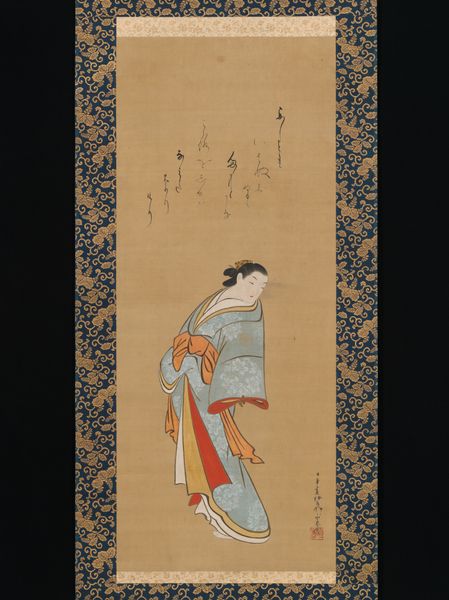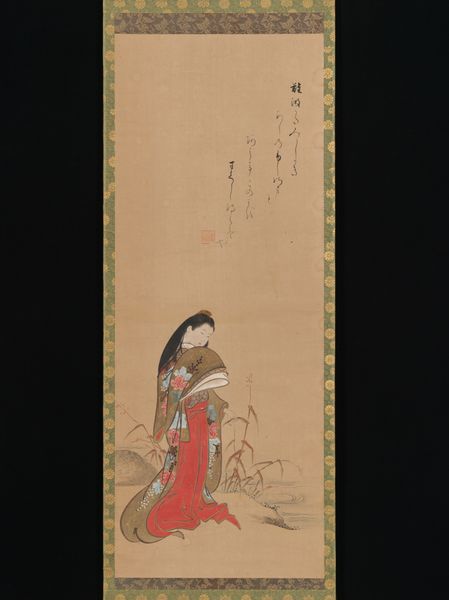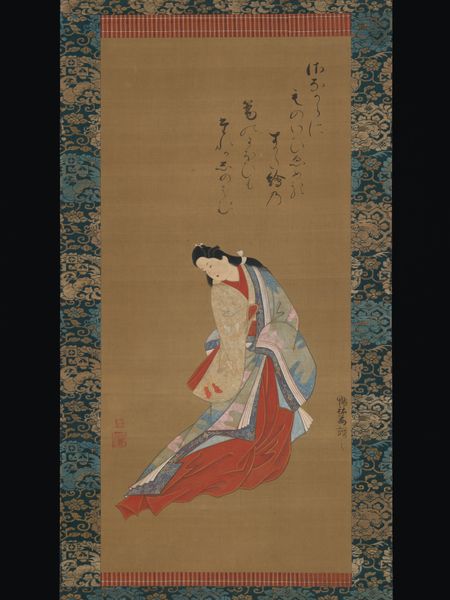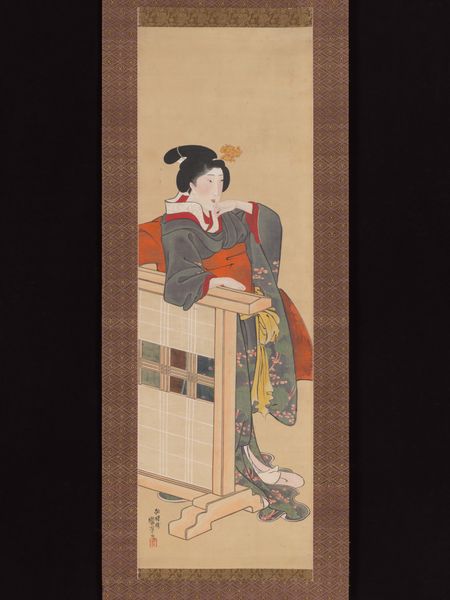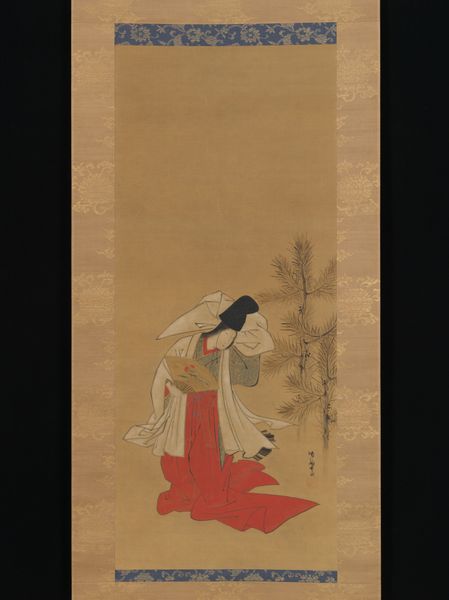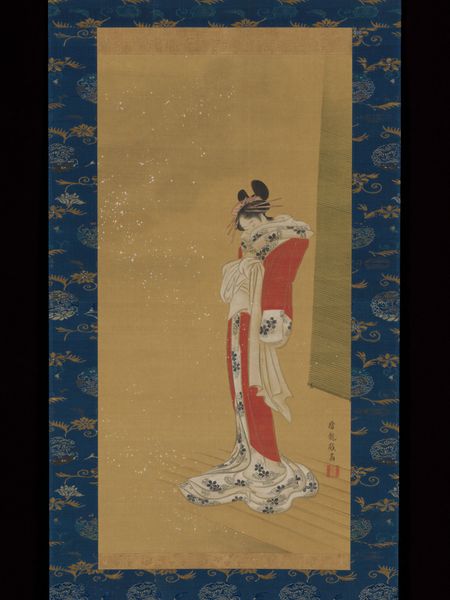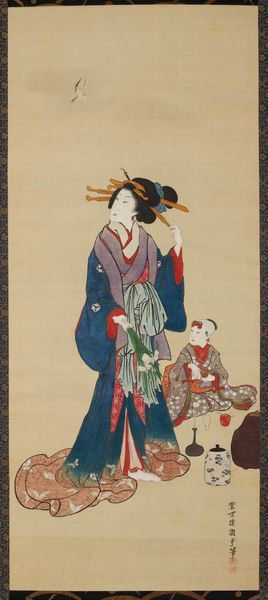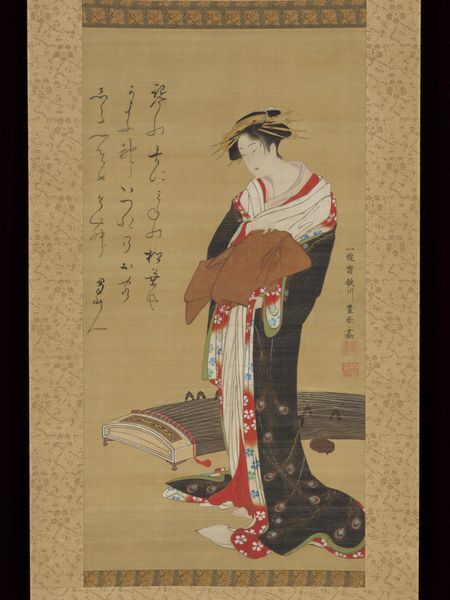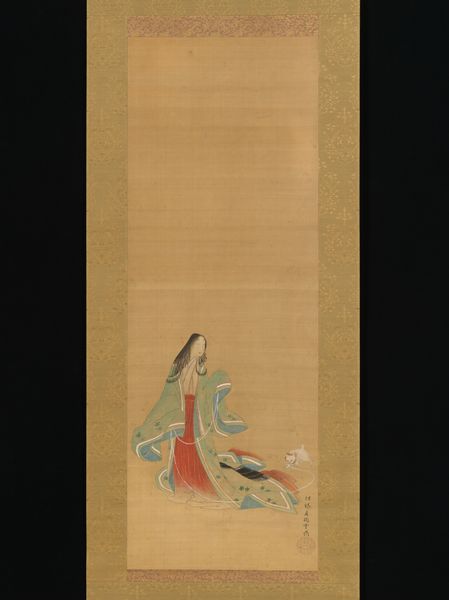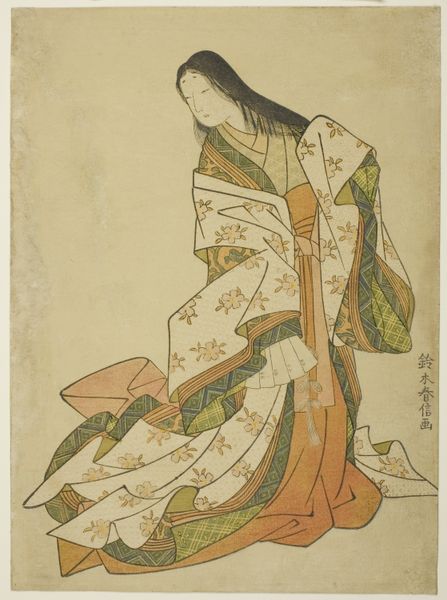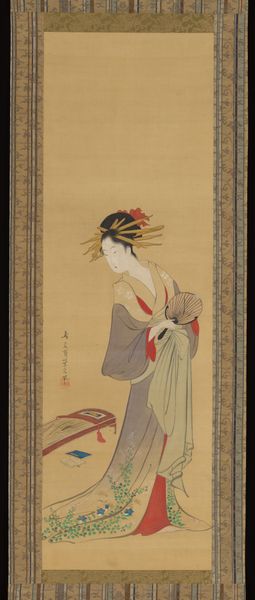
painting, watercolor
portrait
painting
asian-art
ukiyo-e
figuration
watercolor
watercolour illustration
Dimensions: Image: 39 15/16 × 18 3/8 in. (101.5 × 46.6 cm) Overall with mounting: 71 7/16 × 22 11/16 in. (181.5 × 57.6 cm) Overall with knobs: 71 7/16 × 24 7/8 in. (181.5 × 63.2 cm)
Copyright: Public Domain
Editor: This watercolor painting, titled "Woman on Veranda," was created by Takizawa Shigenobu between 1720 and 1740. It's part of the Ukiyo-e movement and is currently at the Metropolitan Museum of Art. The colours feel very delicate and ethereal. How do you interpret this work? Curator: Considering Shigenobu's time, the production and distribution of works like these reveals interesting details about materiality and consumption. The accessibility of woodblock prints, enabling mass production, transformed art from elite consumption to broader accessibility. Does the quality of materials used – paper, pigments – speak to a specific market, or economic dynamic, to you? Editor: That's interesting! I hadn't thought about the materials used having an impact beyond the purely visual. Perhaps the relative simplicity of the colours suggests a mass-market appeal, and less reliance on expensive materials. It's a kind of early democratisation of art, isn't it? Curator: Exactly! Reflect on the labour involved; from the artist creating the initial design to the artisans carving the woodblocks and printing the final image. This represents a shift in artistic production from individualized craft towards something more aligned with factory labor practices we recognize today. And, look closely at the kimono: The patterns weren't randomly chosen, correct? Editor: No, I see what you mean. The kimono design would also be a consumer object, wouldn't it? Mass-produced textiles with patterns accessible to wider group of people! The artwork becomes part of this larger flow of commodities. Curator: Precisely! Considering all this, we shift the analysis of art beyond mere aesthetics towards a commentary on consumption and evolving structures of labor that define early modern Japan. Editor: Wow, this changes the whole way I look at Ukiyo-e art. It’s not just an image but part of a complex social and economic process!
Comments
No comments
Be the first to comment and join the conversation on the ultimate creative platform.
